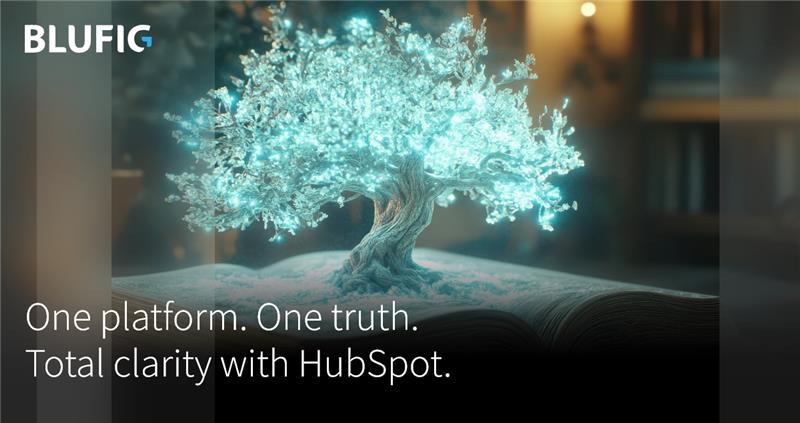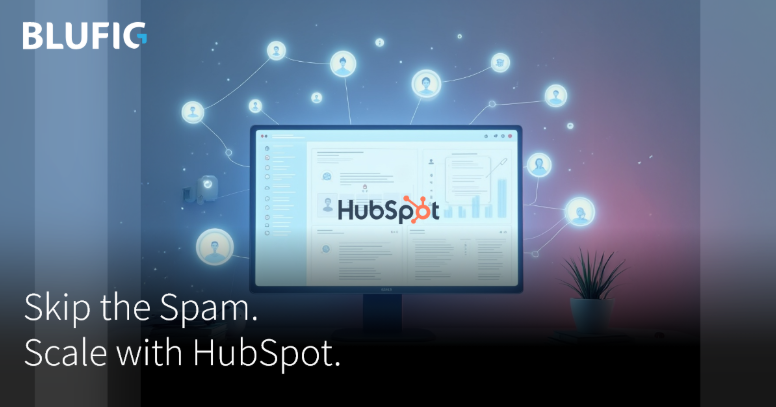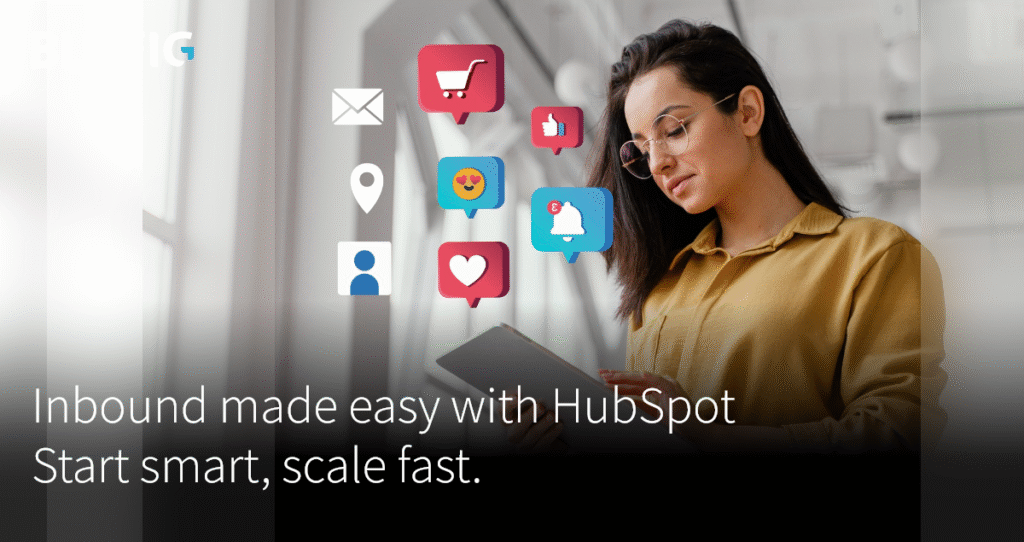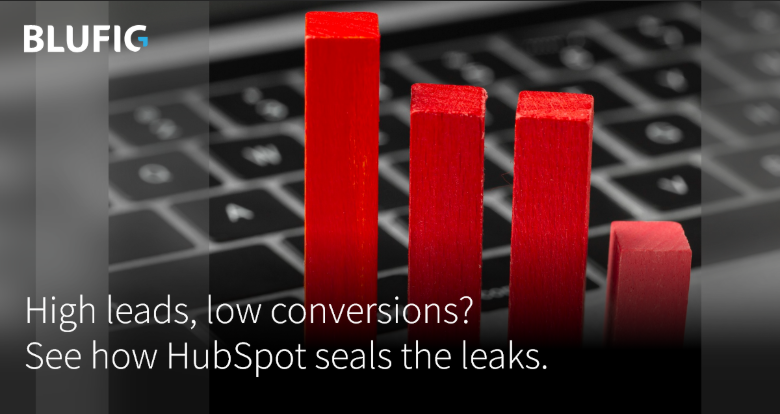Inbound marketing can generate 54% more leads than traditional outbound methods, a clear sign that offering value beats chasing attention. Rather than cold-calling or banner ads, inbound focuses on valuable content that aligns with your audience’s needs.
If done right, it positions your brand as a trusted advisor, not just a vendor. It brings in high-intent leads, nurtures them with timely information, and supports long-term growth by building relationships.
Many businesses tend to hesitate because they don’t know how to begin or scale such programs. That’s where the right platform makes all the difference. From planning a blog to tracking conversions, HubSpot simplifies every step with one integrated platform.
The results are dramatic: after one year, HubSpot customers acquire 129% more leads and close 36% more deals.
In this blog, we’ll get you started with a high-performing inbound strategy and show how HubSpot operationalizes each one to drive measurable engagement, lead quality, and pipeline growth.
Inbound isn’t Just a Buzzword, it’s a Proven Growth Strategy
Inbound is a well-tested pull marketing strategy that brings better results than cold outreach. It aims to pull in a high-intent audience through helpful content and tools. It’s a self-sustaining flywheel where happy customers share success stories, attracting even more prospects.
Inbound also supports scalable nurturing at every stage of the buyer journey, from first touch through purchase, so you can guide leads with relevant content and timely follow-ups. Most importantly, it aligns sales and marketing: a shared CRM and content hub means both teams see the same lead info, which shortens sales cycles and improves conversions.
Build a Content Engine That Pulls the Right Audience
Central to inbound is creating content that the right people want to read. HubSpot equips you with the tools to build a powerful content engine that attracts your ideal audience.
Here’s what you can do with it:
- Plan and organize content using HubSpot’s built-in editorial calendar, which helps you stay consistent and aligned with your strategy.
- Write and publish optimized blogs all in one place, guided by SEO prompts that suggest topics based on what your audience is actually searching for.
- Avoid tool-switching fatigue—everything from drafting to publishing to SEO tweaking happens within a single, unified platform.
- Embed CTAs and forms seamlessly using a drag-and-drop editor. Whether it’s a button, banner, or pop-up, HubSpot’s CTA builder makes it easy to drive engagement directly from your content.
- Track performance in real time with analytics dashboards that show how individual posts, CTAs, and formats contribute to traffic and lead generation.
- Refine your strategy based on data, identifying which topics, formats, and placements perform best, so you can invest more in what works and improve what doesn’t.
Build a high-performing inbound engine with SEO-driven content and HubSpot’s automation tools.
Stay on Google’s Radar with Smart, Built-In SEO Tools
Great content only matters if people can find it. HubSpot’s built-in SEO tools help keep your pages healthy and search friendly. The platform scans your site and provides prioritized SEO recommendations—like keyword optimizations or broken-link fixes—along with clear guidance on which pages need attention and what actions to take.
A standout feature is HubSpot’s topic cluster (or pillar content) strategy. You define a core theme—your pillar—and build related content around it. HubSpot helps you structure and interlink these pages to build topical authority, which search engines love. Companies that adopted this strategy saw organic traffic grow by 7x to 30x over time, making it one of the most effective long-term plays for inbound visibility.
You can also track how well your SEO efforts are working. HubSpot’s dashboards integrate with Google Search Console, showing impressions, clicks, and keyword positions, so you can measure organic traffic growth from both blogs and landing pages.
Build Landing Pages That Turn Clicks into Leads
Once visitors click your posts or ads, you need pages that turn interest into action. HubSpot’s landing page builder lets you launch professional pages without coding. The drag-and-drop interface lets you arrange sections as needed, and the WYSIWYG editor shows you exactly how the page will look.
Hundreds of pre-built templates (free and premium) are already optimized for lead capture and conversions. You can easily customize them with your branding, images, and headlines.
HubSpot also makes experimentation easy. Its A/B testing tool lets you duplicate a page, tweak one element (like a headline or image), and compare performance. This built-in split testing helps refine your messaging, layout, and CTA placement over time.
All conversion elements are natively integrated. You can drop in HubSpot forms or pop-up callouts, and even add chat widgets or chatbots for real-time interaction.
Since forms, chat, and calendars are built into the platform, submissions flow directly into your CRM, creating a smooth, plugin-free experience for both your team and your prospects.
Make Lead Capture and Follow-Up a Whole Lot Easier
In inbound, capturing lead intent and following up is just as important as attracting visitors. HubSpot offers multiple ways to do this.
- Use the Forms tool to embed contact forms or lead magnets, or deploy pop-ups based on scroll or exit intent.
- Live chat and chatbot builders help engage visitors proactively, and even the free chat tool lets you connect in real time to convert leads and offer support.
Once a visitor converts, their data—form fills, page views, chat transcripts, email opens—is automatically logged in HubSpot’s CRM. This unified timeline ensures sales and marketing stay aligned.
You can also score and prioritize leads based on engagement or demographics, so reps focus on the highest-potential contacts.
With leads in the CRM, you can trigger automated nurturing workflows—email drips, follow-up tasks, or alerts—based on actions like downloads or inactivity.
For instance, if someone downloads a whitepaper but doesn’t request a demo, HubSpot can send a reminder or notify sales. Segmentation and dynamic tokens personalize each message by industry, name, or company.
It all runs on autopilot, ensuring no lead slips through the cracks.
Make your inbound efforts measurable, repeatable, and scalable with Blufig’s HubSpot services.
Craft Conversion Paths That Guide Prospects Naturally
Conversion paths help guide prospects from awareness to decision. With HubSpot, you map these journeys using visual workflows and smart content.
For instance, you can set up a series of emails based on a lead’s stage, like a welcome message, followed by educational content, then a sales offer. Each step is triggered by behaviour such as visiting a pricing page or downloading a case study.
The drag-and-drop builder makes it easy to define branches and delays.
Personalization is built in. Workflows use dynamic tokens (like name, company, or location) and CRM data to tailor messages.
HubSpot’s smart CTAs also adjust offers based on who’s viewing the page, so prospects see content that fits their interests automatically.
If a lead goes cold, HubSpot can retarget them. For example, blog visitors who don’t convert can be added to follow-up campaigns, while internal alerts notify your team when key prospects revisit pricing pages.
Analytics That Show What’s Working (and What’s Not)
HubSpot’s reporting tools bring everything together so you can clearly see what’s delivering results.
At the campaign level, you can track traffic sources, form submissions, and deals won side by side. Each blog post, landing page, email, and social post is tagged, making it easy to connect content to conversions and revenue.
HubSpot’s multi-touch attribution reports even show how much pipeline each campaign generated. You might find that a specific eBook helped close deals weeks later, giving you credit for long-term impact.
HubSpot also offers funnel and cohort reports to visualize drop-offs—like lots of blog views but few inquiries—so you can optimize accordingly.
Dashboards are customizable and shareable, giving marketing leadership a live view of KPIs like visitors, MQLs, SQLs, and opportunities.
All-in-One Platform Means Less Guesswork, More Impact
HubSpot’s real power lies in its all-in-one approach. Instead of juggling multiple tools, you get content management, CRM, email, analytics, and more, all under one roof.
Your blog connects to your CRM, which syncs with email and ads. All data is shared, so leads are automatically captured and accessible across teams.
This integration means less dashboard switching and more time for strategy. Every asset—blog, landing page, or email—is trackable and editable in one place.
Want to test a CTA? Just update it in HubSpot and monitor the results. Need to revise contact lists? One central database powers all your campaigns. This connected setup also boosts collaboration as sales and marketing now share the same lead data and timeline.
HubSpot also grows with you. Its flexible pricing and modular Hubs support companies from startup to enterprise. Small teams can start free and scale up.
Whether you need a simple CRM or enterprise-grade tools, HubSpot expands without painful migrations, letting you grow at your pace.
Blufig Gets You Up and Running with HubSpot, the Right Way
Working with an expert partner makes all the difference when you’re launching or scaling inbound marketing. Blufig is a certified HubSpot Solutions Partner that specializes in driving measurable marketing outcomes using HubSpot.
- End-to-End HubSpot Setup: From portal configuration and contact properties to user permissions and custom objects, everything is structured to fit your business—not the other way around.
- Inbound Strategy That Fits Your Funnel: We work closely with your team to shape an inbound approach grounded in your buyer journey. This includes defining personas, planning content themes, and mapping touchpoints that support the full funnel.
- Content and SEO That Deliver: Our team creates blogs, landing pages, and lead magnets optimized with HubSpot’s topic cluster model, so you can grow your visibility and generate qualified leads.
- Automation That Works for You: From lead nurturing workflows to smart CTAs and behavioural triggers, we set up automations that engage your audience at the right time—without adding to your workload.
- CRM Aligned with Sales and Marketing: With proper CRM configuration, pipeline setup, and team onboarding, we ensure your sales and marketing teams are always in sync and working from a shared data source.
- Support That Grows with You: Beyond go-live, we stay with you—fine-tuning campaigns, reviewing performance, and helping you unlock more value from HubSpot as your goals evolve.
Launch faster with expert HubSpot onboarding, portal setup, and CRM configuration.
Inbound marketing is incredibly effective, but only if you have the right tools and process. HubSpot brings together SEO, blogging, social, landing pages, forms, automation, CRM, and analytics so that every tool works toward the same goal. You no longer need separate apps or spreadsheets, everything from visitor click to closed deal lives in one unified system.
All that’s left for you is to create value and meaningful content. Publish that expert blog, optimize it with HubSpot’s SEO tools, guide interested readers through your HubSpot forms and emails, and watch the analytics dashboard confirm your success.
Not sure where to begin? Let Blufig help you turn your HubSpot investment into a powerful inbound engine—strategic, structured, and built for measurable growth.
Looking For A Marketing Partner?
We will make it worth your while!



